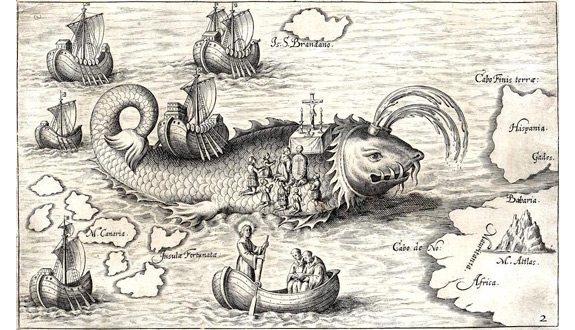
When and where was the first Mass offered in America? No one living today knows the answer to this intriguing question. But we can summarize what we do know about the first Masses in various parts of the New World.
Some legendary accounts of the life of St. Brendan, who was a priest, say he set off in a small boat on a journey to the Isle of the Blessed, sometime around A.D. 512, along with 14 monks and priests. After they landed on Saint Brendan’s Island-wherever that was-he celebrated Mass. There are people who say that elements of the legends of the journey demonstrate that the Irish did have some knowledge of the northeast Atlantic coast of America, so if St. Brendan or some other Irish seafaring priest did arrive there, he would certainly have offered Mass, as he is said to have done in nearly every other place he visited (including, as the legend goes, on the top of a whale in mid-ocean).
Remains of a Norse settlement at L’Anse aux Meadows, on the island of Newfoundland, were discovered and excavated in the 1960s. The settlement dates from around A.D. 1000. It was probably not the only settlement the Norse set up in the region, and it was likely that it served as a sort of permanent outpost for shipping lumber and furs to Greenland and perhaps further east. The size and number of buildings suggest that as many as 150 people lived there.
Icelandic bishop Eric Gnupsson, who had been based in Greenland since 1112, “went to seek Vinland” in 1121-presumably to minister to some of his far-flung Catholic flock-but nothing more was reported of him. If he succeeded, he surely offered the first Mass in the New World, perhaps at L’Anse aux Meadows or at another Norse settlement. With the approval of the Norwegian king, a bishop for Greenland was set up and the see was established in the settlement of Garðar. The first bishop, Arnaldur (Gnupsson’s immediate successor in Greenland), arrived there in 1126 and began construction of a cathedral, devoted to St. Nicholas, the same year. The last bishop served until 1378. Archaeologists have excavated the ruins of the cathedral, a cross-shaped church built of sandstone.

